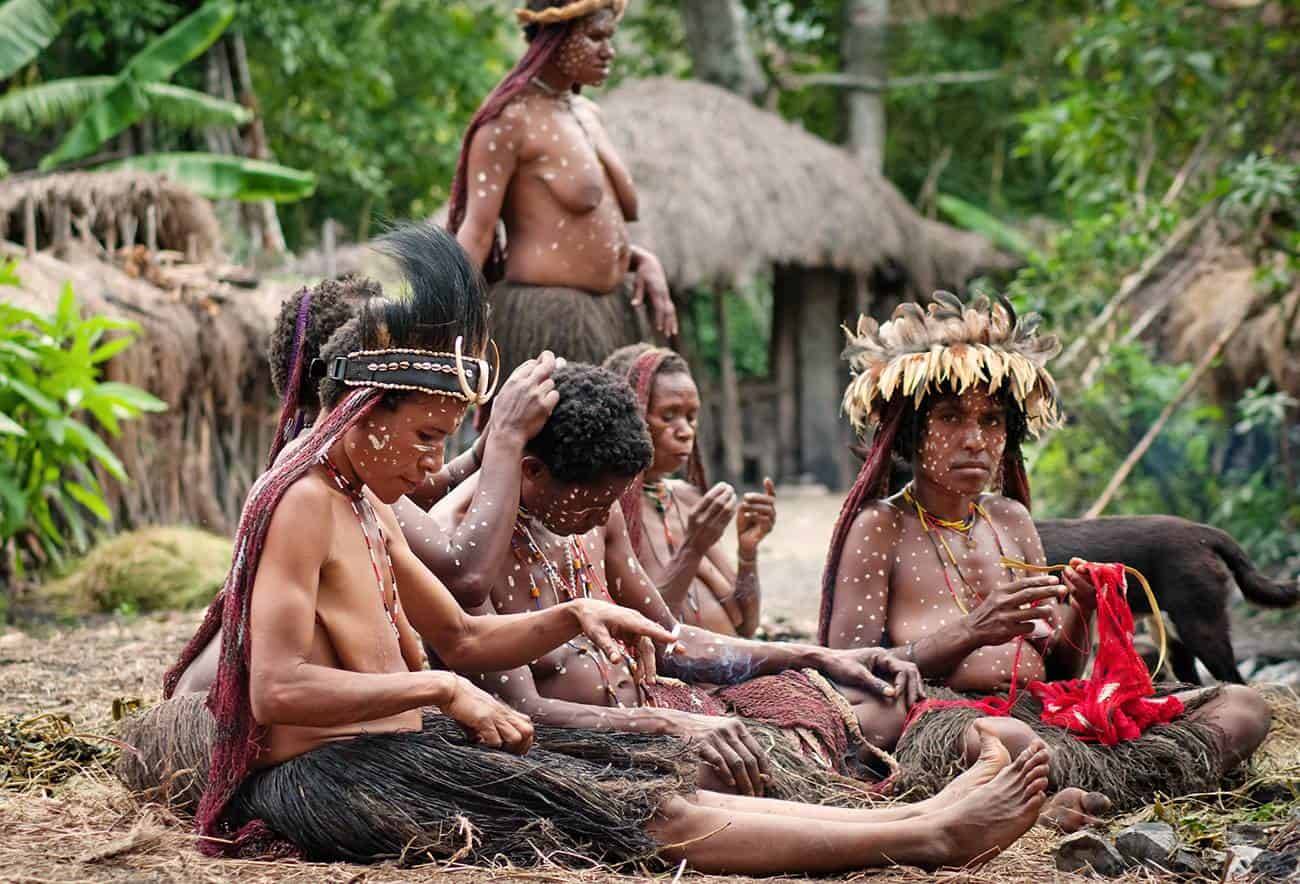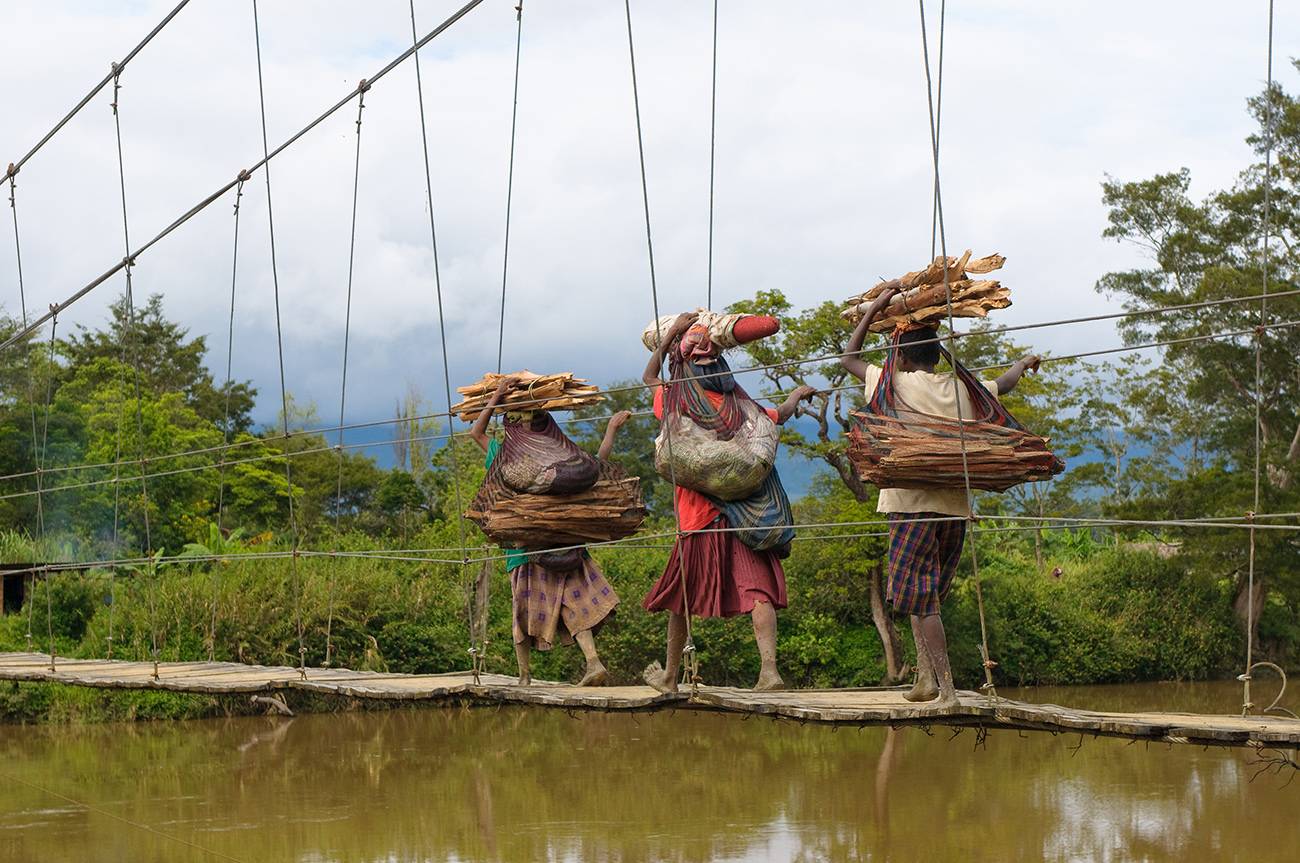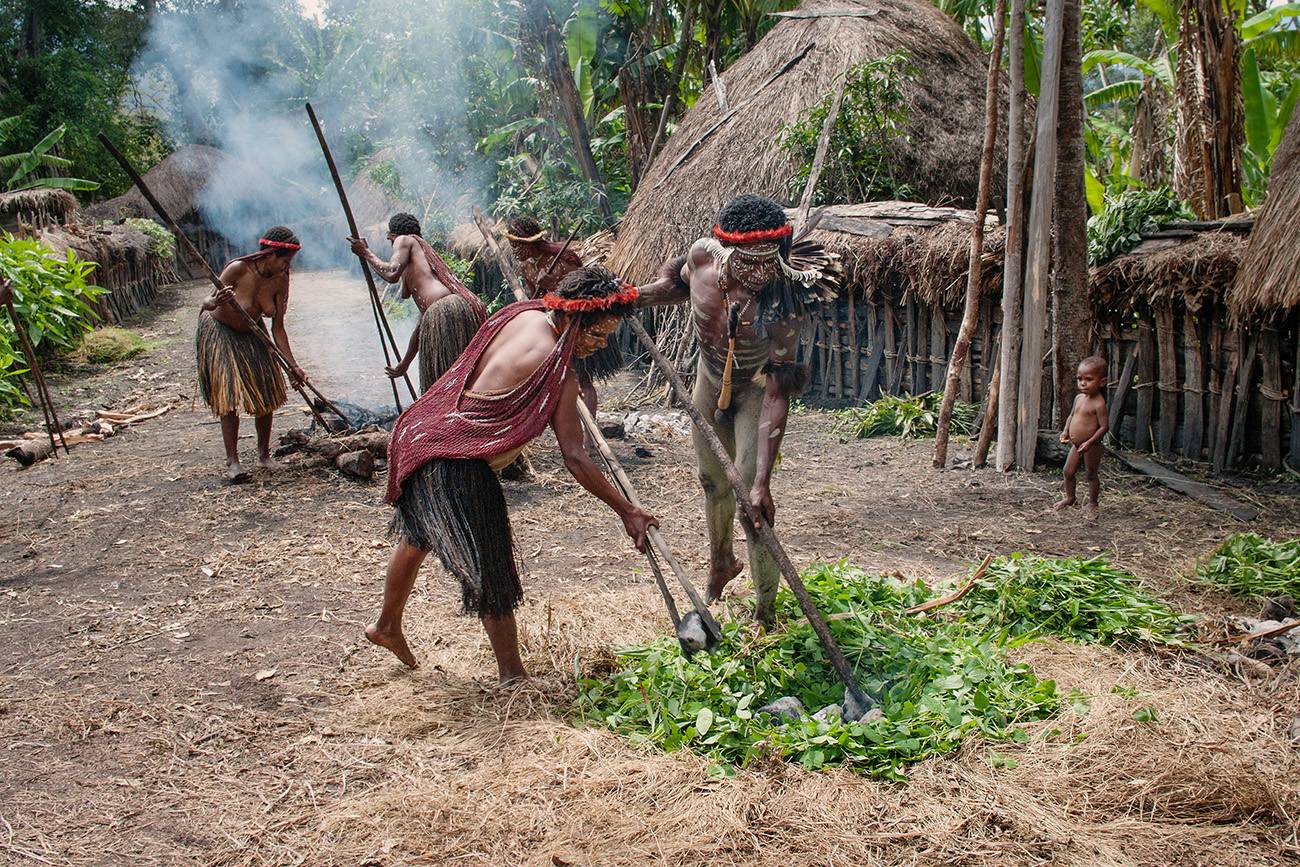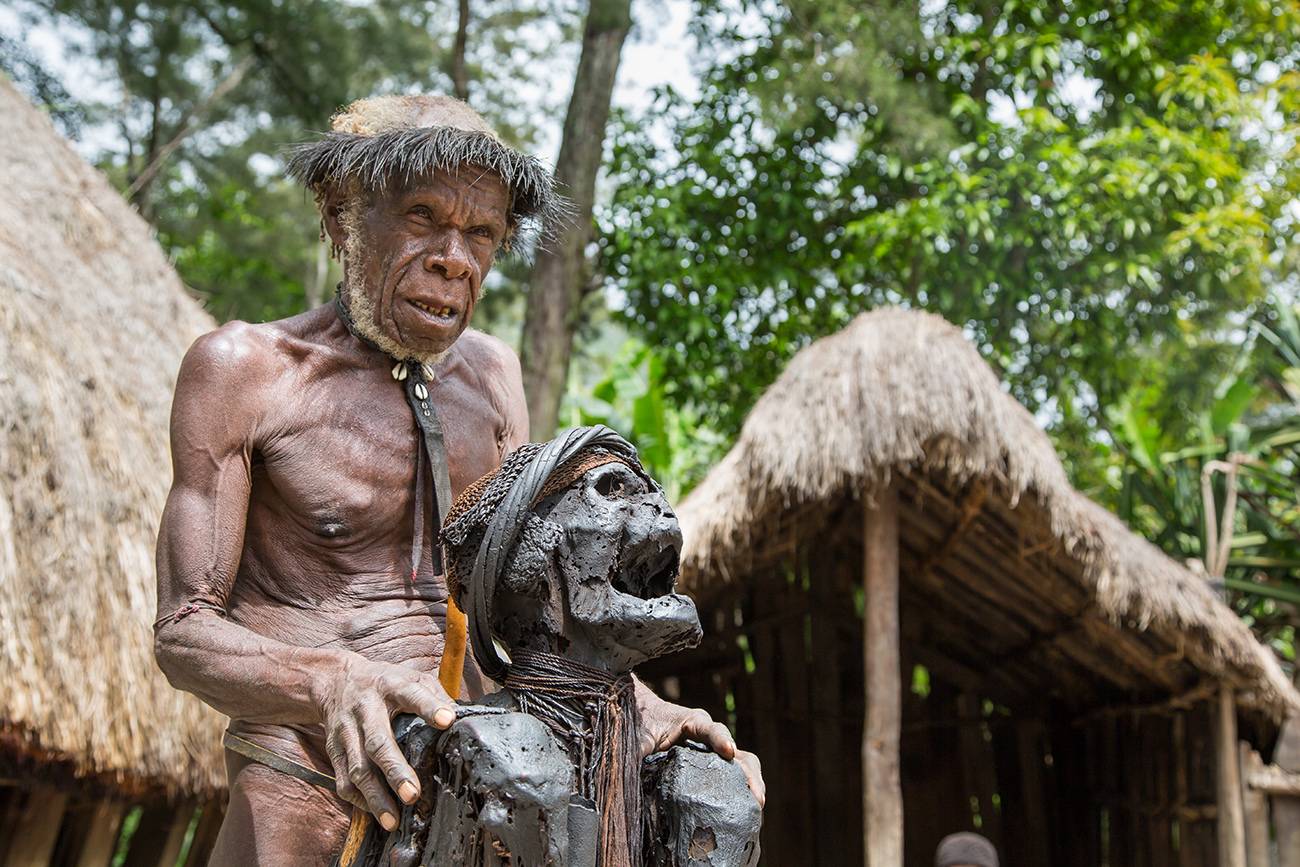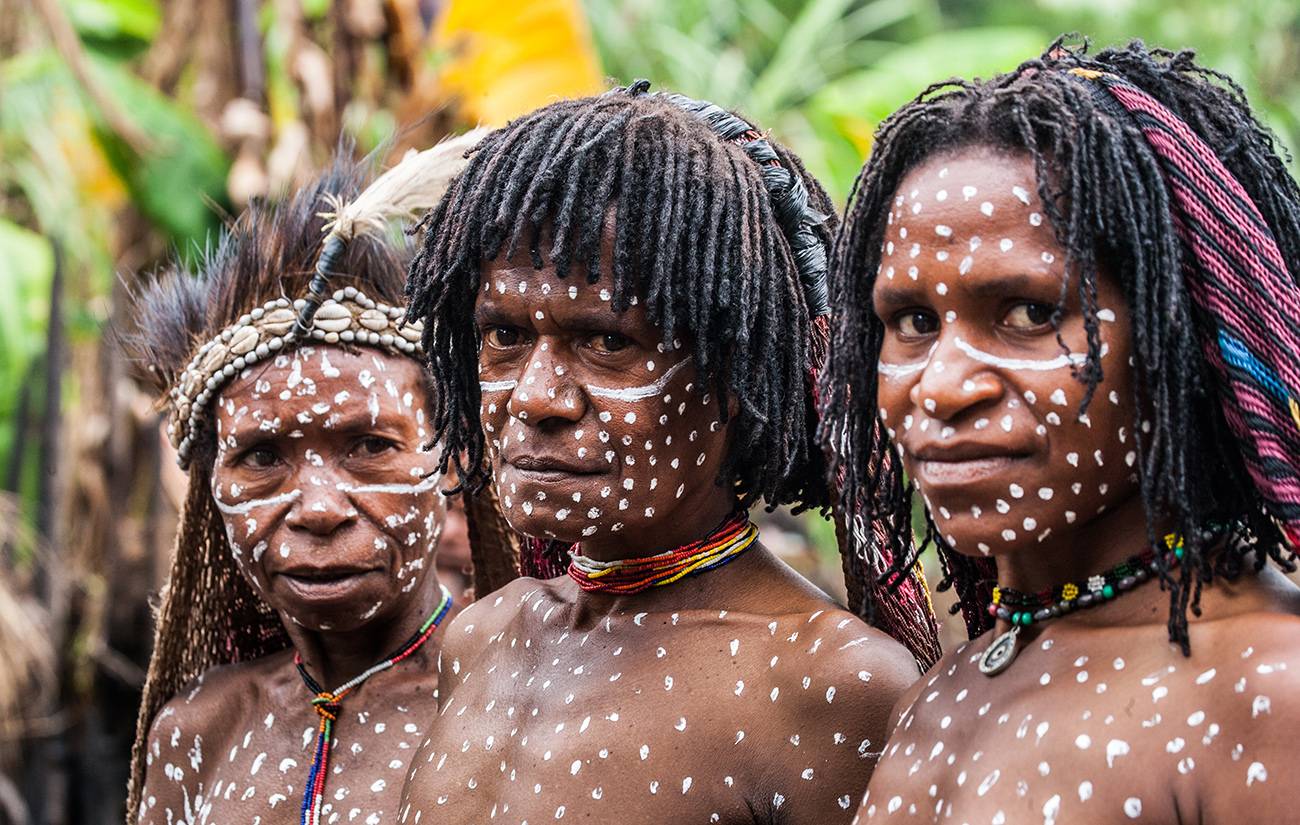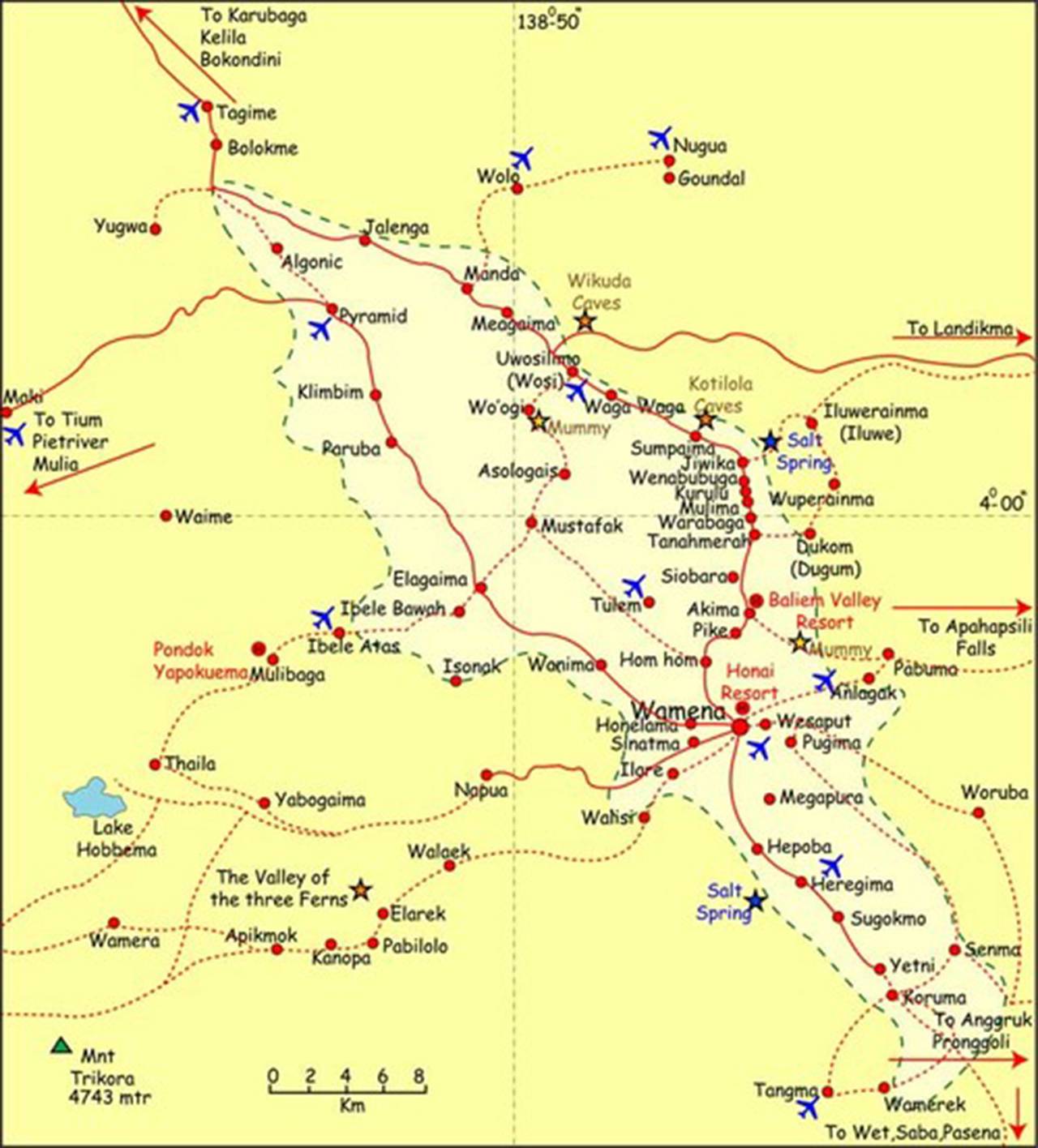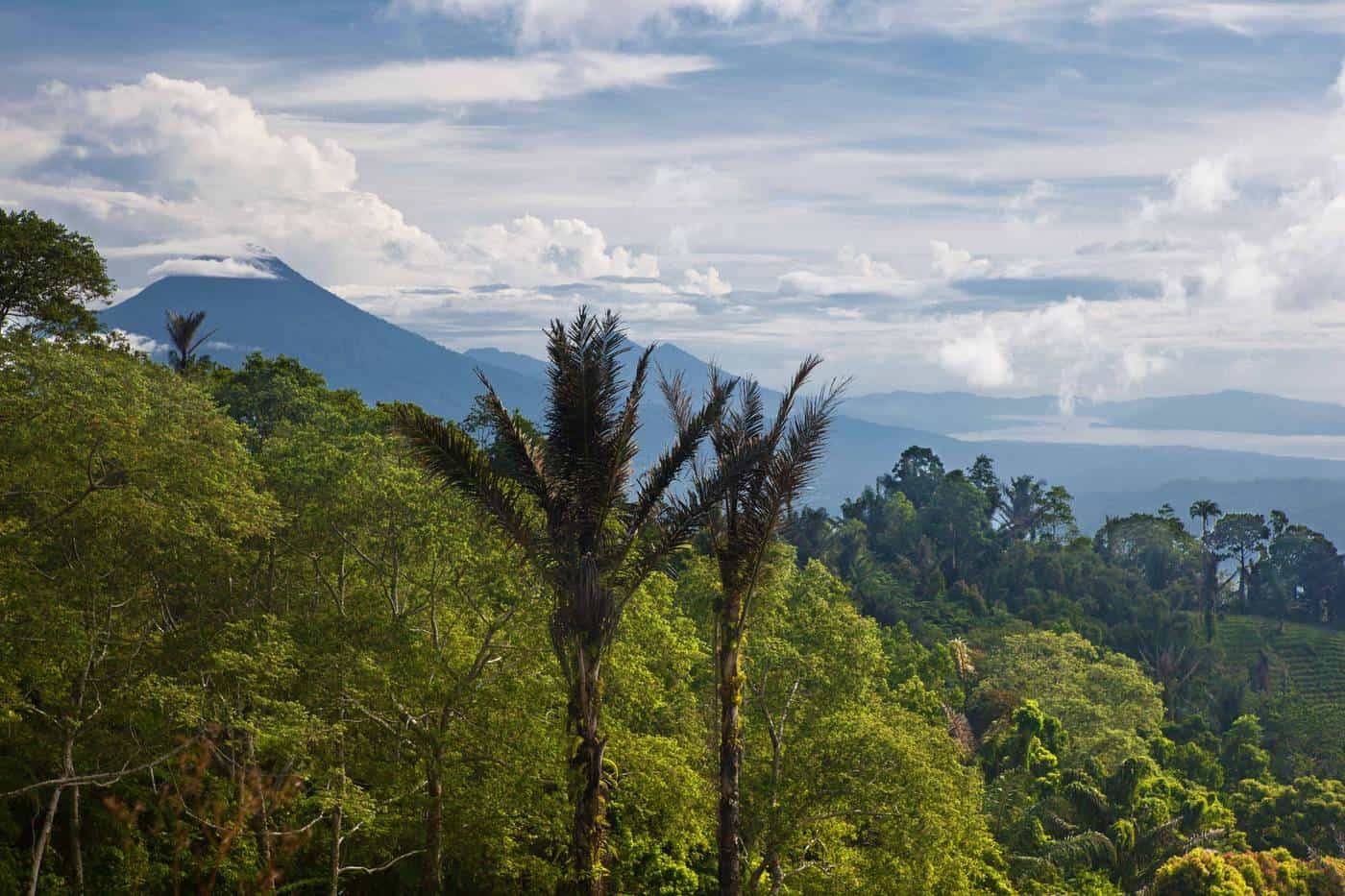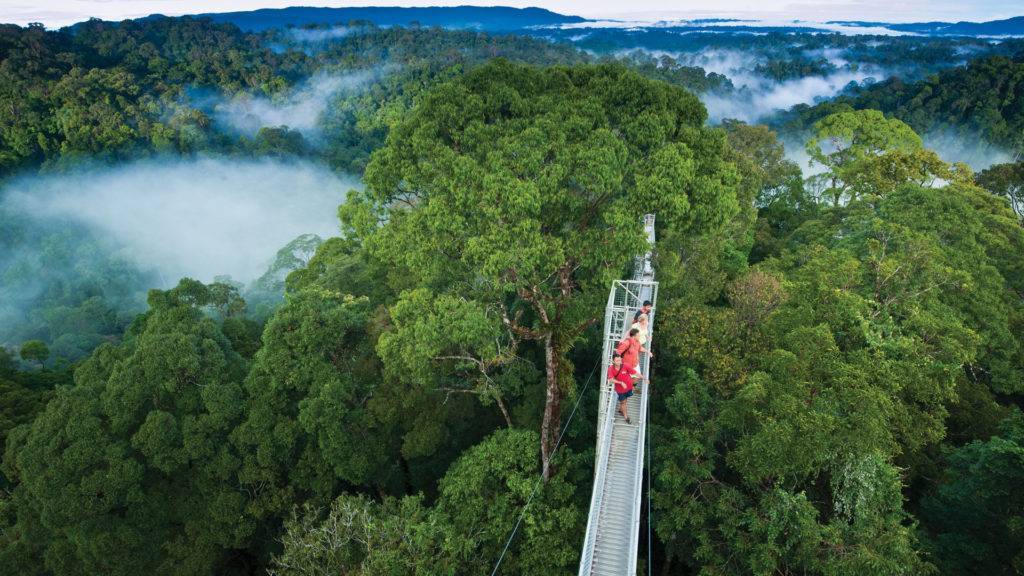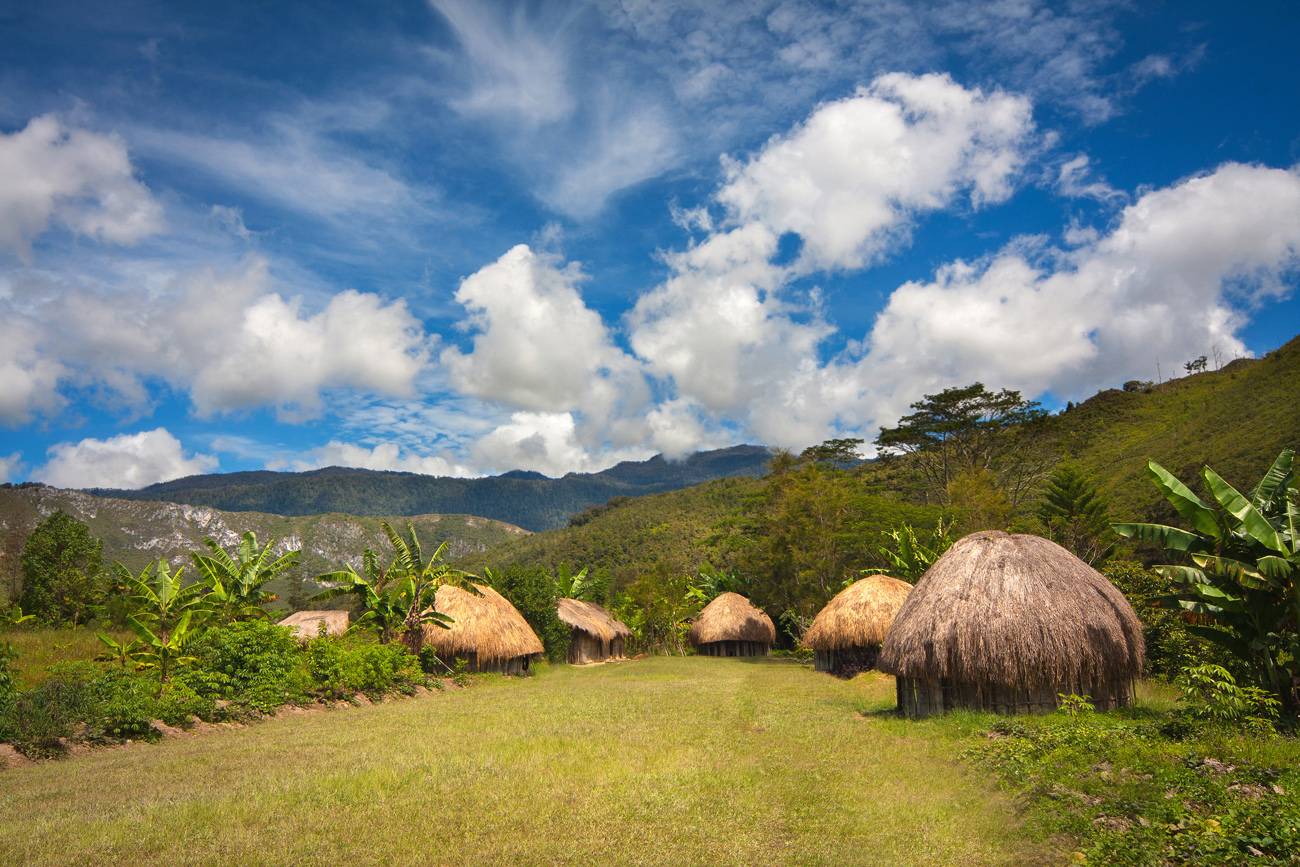
ECO-TOURISM & TREKKING HOTSPOTS IN WEST PAPUA
When the American naturalist and novelist Peter Matthiesen first visited this outlandish region with his expedition he said: ”In the Baliem Valley in Central New Guinea, the Stone Age has survived into the twentieth century”. Indeed, the valley remains one of the very few places on Earth where people continue living in semi-Neolithic circumstances, and there is not a single sign that it would ever change.
THE GUINEAN HIGHLANDS
The Guinean Highlands are spanning across the whole island of New Guinea, from the head to the tail and they are the highest mountains of Oceania, often capped with ice. The western ridges, that officially belong to Indonesia, are 600 km long and 100 km across.
Steep volcanic peaks up to 5000 m high towering above permanent equatorial glaciers ensure a steady supply of rain from the tropical atmosphere. Stretching along the lower slopes of the Highlands, 80 km in length and 20 km in width, the magnificent Baliem Valley reaches up to the altitude of 1 700 m and for its animist tribes, it became the cultural symbol of West Papua.
BALIEM VALLEY
Sealed of the rest of the world by mighty the mountain walls and no roads leading from anywhere around, this little kingdom keeps its own Unknown. After Irian Jaya was discovered the region quickly became a focus of attention to the international zoologists, anthropologists, naturists, journalists and adventurers. Even though the interaction with the indigenous tribes is relatively limited, there are places of rapidly-growing eco-tourism in this region. Baliem Valley is the major hub; and if you visit in August you might well experience one of the bucket-list items of any traveller – the Baliem Valley Festival.
Tribes of Dani, Yali and Lani have recently opened up to the Western world and share their secrets with strangers. The village of Wamena is a place where you will want to head to encounter the most fascinating, yet often shocking customs and habits of Dani tribe, first come across in 1938 by the Americans.
Following the Dutch colonial era brought the Westerners into the immense rainforest of Papua and the Christian missionaries established the small town of Wamena with the main goal to civilise the native population. However, a little has changed since then and the powerful tribal culture keeps resisting and maintaining the ancestral legacy.
WAMENA
To get closer to the mysterious tribal people of Baliem Valley, travellers need to arrive at Wamena. It is not an ordinary town at all. Wandering around you will see real folklore. Dazzling markets amongst traditional straw huts and half-naked locals shouting and chattering around can be perceived as a perfect introduction to the regional culture. Landing in Wamena helps to adapt to the unfamiliar images and never-experienced moments that will be only escalating in the next few days.
Wamena town is the starting point to the Baliem Valley and a place where to arrange a private guide or join a group tour. The options are limitless, ranging from one-day easy walk to weeks-long jungle expeditions to follow the footprints of the Dani, Yali or Lani tribes. Independent solo travellers are advised to hook up with others in a similar situation to make their adventure more joyful and safer, of course. Even the most experienced hikers should find a buddy in order to combat the thick foliage and the misleading paths of the valley.
STONE-AGE TRIBES
Hunting rather naked, men solely protect the most important part – their penis, using a tube-like gourd, called “koteka”, and topless women only wearing a skirt made out of grass and other natural material. Surprisingly enough, although this tropical region of Papua lies not far from the equator the Baliem Valley of an altitude up to 1 700 m it is subject to low temperatures, particularly in the night. For instance, the roaring Maoke Mountains (Jayawijaya) permanently covered with snow, does not provide much heat. So, it is quite remarkable that the indigenous fashion uses so little to cover their bodies.
DANI TRIBE
The Dani live in honai-honai – tiny mushroom-shaped huts made out of thatch and reeds and they are hunters. Men spend most of the time preparing primitive weapons, hunting and treating resulting injuries while woman look after the youngsters, grow sweet potatoes and cook meals.
Like most of the ethnic groups in New Guinea, Dani people live in their own animist world full of peculiar rites and rituals. A finger amputation of the female members for each death in a family or multiple pig slaughtering during celebrations to show the success of the community. Pig feasts and cooking rituals are big parts of every event when several pigs are killed using a bow and arrow, portioned, wrapped in a banana leaf and traditionally cooked in the earth oven together with potatoes and cassava.
YALI TRIBE
The less known Yali Tribe, only discovered in the early 60s, is also called the “tribe of dwarfs” due to their short height (150 cm on average). The access to these villages is somehow limited, not only because of their altitude of about 2 500 m but also to reach these settlements is a several-day trek through thick vegetation and steep mountains of Jayawijaya.
The Yali were notorious hunters and reputed cannibals once used to eat the bodies of their enemies, grind the bones to dust and throw it into the deep valley to prevent them from returning. The region is so remote and inaccessible that even the neighbouring ethnic groups rarely used to get in contact with each other. That resulted in a different development of each individual language, so the subgroups of this territory often do not even understand each other.
LANI TRIBE
The Lani inhabit the eastern part of the Baliem Valley and is famous for their tobacco. Pigs are considered to bring wealth and used as currency. It is funny to see the local women cuddling the snorting animals before they slaughter it and steam the meat on hot rocks.
ESSENTIAL EXPERIENCES IN BALIEM VALLEY
- Sinatma Suspension Bridge – an absolute must-do at the Wamena. At first sight one would probably think “you gotta be kidding me!” Pluck up your courage and cross the river (with alligators) using a prehistoric hanging bridge that moves from side to side as the winds blow
- Kontilola Cave – is a moderate trek near the village of Waga Waga, leading to the gigantic stalactite cave filled with bats. Multiple stunning caves on the way
- Wamerek Village – this is a stunning one day hike to the river village of Wamerek, passing the lovely settlements of Kilise and Ibiroma. There is a homestead in Wamarek for those who decide to extend their stay or do some more trekking around
- Pugima Valley – a pleasant day walk along the mighty Yuan River with some stalagmite caves, waterfalls and picturesque scenery. Numerous tribal villages come into sight on your way. Visit the Dani around Kurima and Sogomo villages (4 hours return to Wamena)
- Meet the Mummies – one of the main reasons why Dani tribe became so popular is the more than 300-years old smoked mummies of famous tribesmen. They are well-preserved and still to admire in the village of Akima, Jiwika and Pumo and the foreign visitors are very welcome. The lucky ones might get a chance to witness Dani battle and the dreadful pig feast ritual when travelling to Jiwika during the festive time
BALIEM VALLEY FESTIVAL
Baliem Valley Festival is something very special. Embark on a beguiling cultural journey of Dani, Yali and Lani tribes and become part of the most significant event of a year and a highlight of tourism in the region. The event is held every August and features attractions including, mock tribal warfare in a real battle arena accompanied by the traditional music instrument Pikon, dazzling sing-sing and dance performances, spear and archery competitions, pig racing and naturally, the presentation of grandiose costumes. (5-7 days/$ 1500-3000 USD for a group tour – online booking recommended).
NOTE the ticket fee might sound too high, but booking a group tour is the only way how to enjoy the event without getting stuck with no accommodation (it always gets fully booked during this time), being hustled, ripped off or terrorised by the corrupted police. There were many reports of independent travellers who ended up in trouble for trying to get into the festival independently and paying less.
Remember that Papua is still one of the most lawless countries on earth. Also, there is nothing like that on earth and this once-in-a-lifetime experience is absolutely worth of the money!
TRAVEL TIPS
Baliem Valley is an extreme off the beaten track destination. Hence to avoid getting lost always watch time and try to get back to your guesthouse before dusk when moving around independently.
Do not forget to bring a headlamp, flashlight or a torch that should be essential parts of your backpack, not only when trekking. Also, a good repellent will come in handy.
Trekking in Baliem Valley is very poor in terms of trek marks, signs, maps and facilities, not even to mention the quality of water. Do not underestimate the conditions of dense jungles and always hire a local guide when hiking or join an organised expedition.
For trekking and cultural tours in Baliem Valley check out Putra Papua – the most reliable tour operator recommended by Lonely Planet and many other travel guides. http://www.putrapapuatours.com/home.html
NOTE
To travel to Papua you must hold a valid visa to be able to enter the country. Besides, to enter any destination in West Papua, except for the capital city of Jayapura, Sorong and Biak, you will need to apply for Surat Jalan – a travel permit. That can be obtained at the central police station in Jayapura once arrived for about $10 USD.
It is always advisable to inquire about the safety situation in West Papua or in any location you intend to visit due to the presence of violence. There are frequent tribal conflicts which you should avoid as much as possible when travelling.
Malaria pills and vaccination against the Yellow Fever is strongly recommended and some countries such as even request all visitors get immunised prior to the entry to.
Remember that ALCOHOL is illegal in Papua
WHEN TO TRAVEL
The dry season runs from May till October, with the peak month of August when the annual Baliem Valley festival takes place, but also prices go high up. It is recommended to travel during the dry season as the wet season brings strong winds, heavy storms as a result of what many tour operators close and flights are often cancelled.
HOW TO GET THERE
Fly to Jakarta/Denpasar first. Catch a domestic flight to Jayapura. (Lion Air, Garuda Indonesia & Sriwijaya Air offer regular flights)
Then fly to Wamena. (several daily flights from Jayapura to Wamena with Trigana Air, 40 min)
For all international flights check out www.skyscanner.com or www.momondo.com


